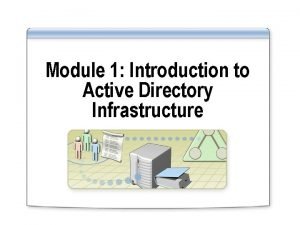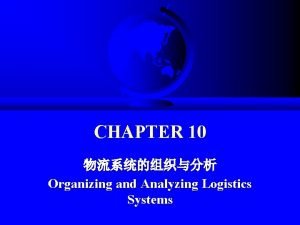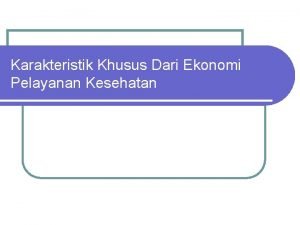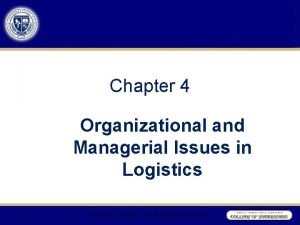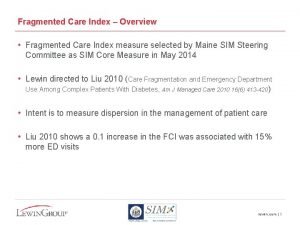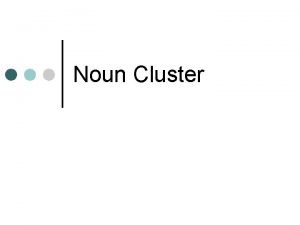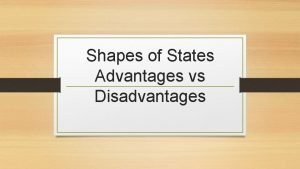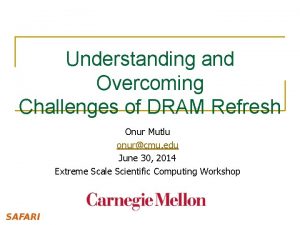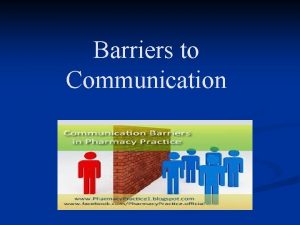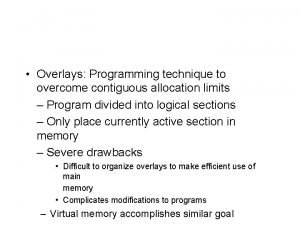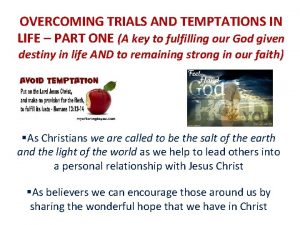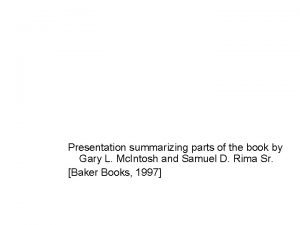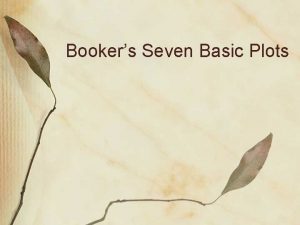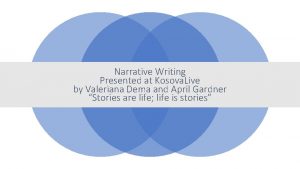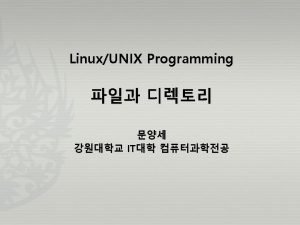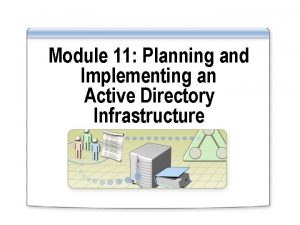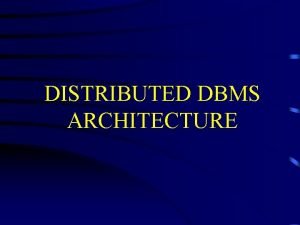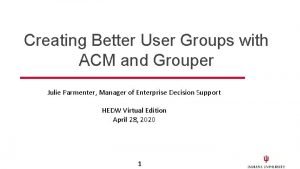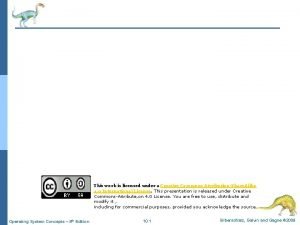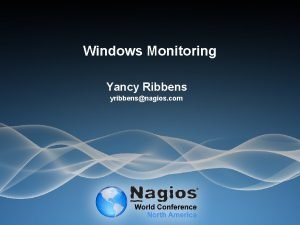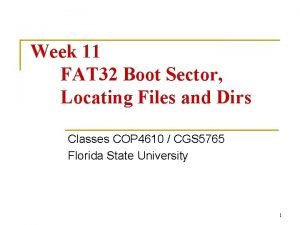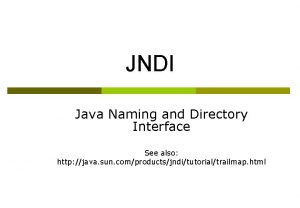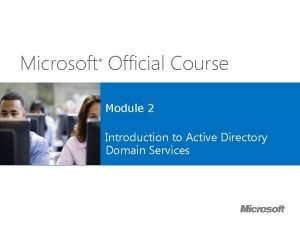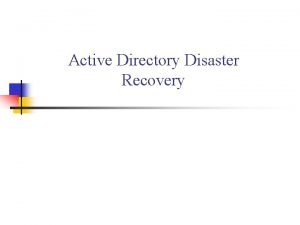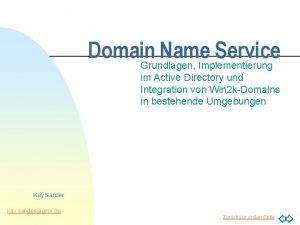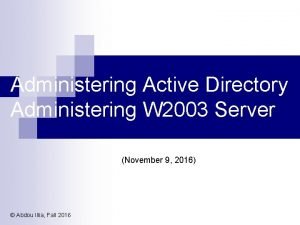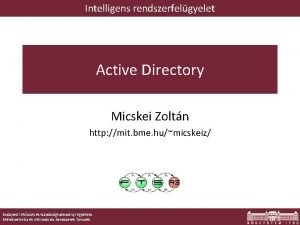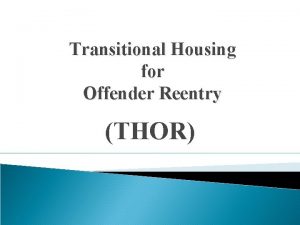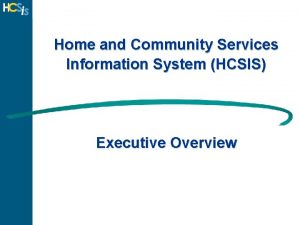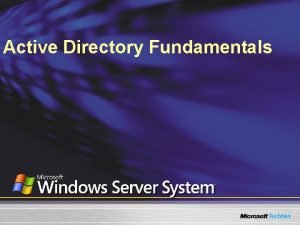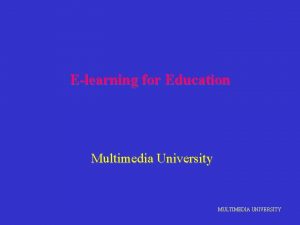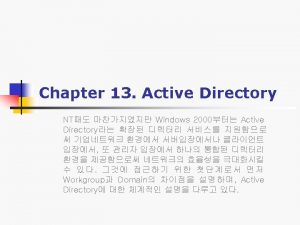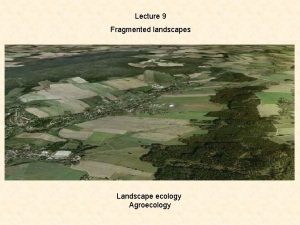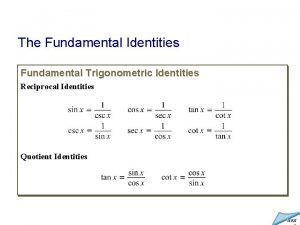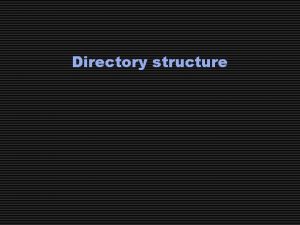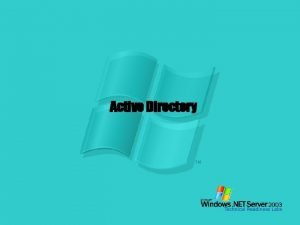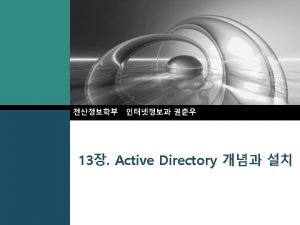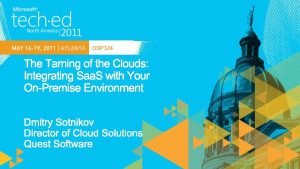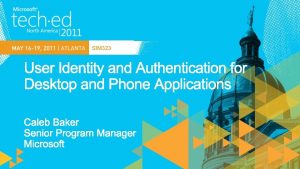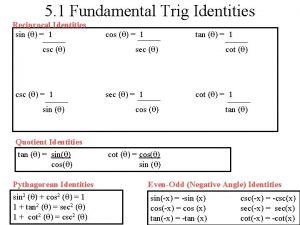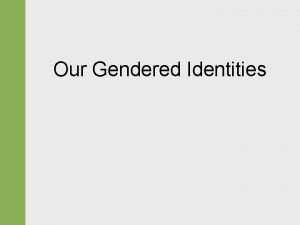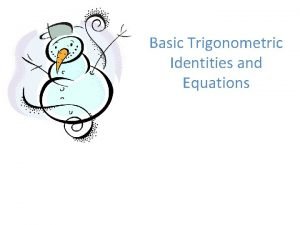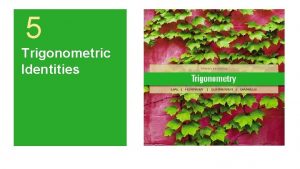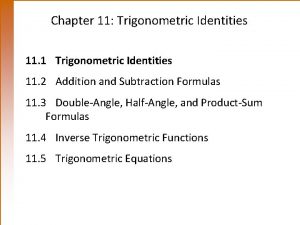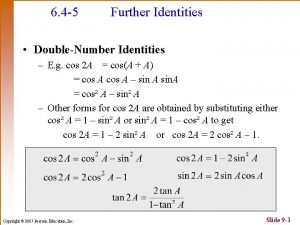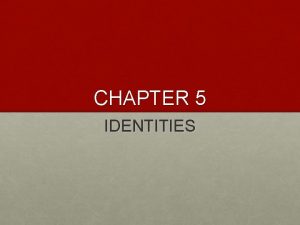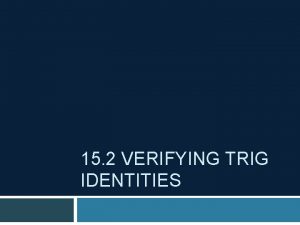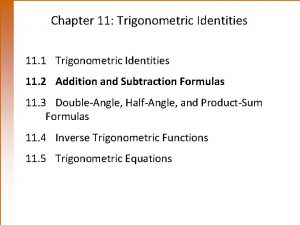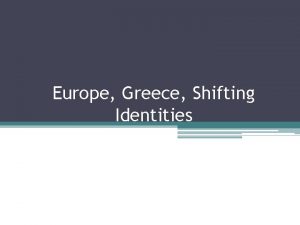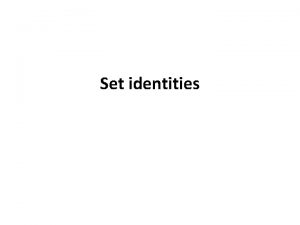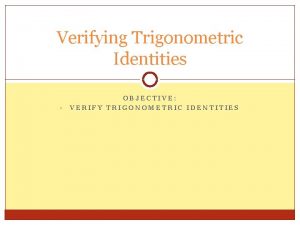Directory Infrastructure Roadmap Overcoming Fragmented Identities Roadmap to













































- Slides: 45

Directory Infrastructure Roadmap Overcoming Fragmented Identities Roadmap to a Reliable Directory Infrastructure Thorsten Butschke & Dr. Martin Dehn KOGIT Enterprise Identity Management Gmb. H

Agenda History of Directory Services From X. 500 to LDAP Meta-Directory Approach Virtual Directory Use Cases Application Integration Simple Schema Mappings Building a Virtual Tree Virtualization of Multiple Identity Sources Adding Intelligence Using Business Logic Maximizing Directory Infrastructure Performance Enhancing Reliability Vendor Overview

From X. 500 to LDAP A short introduction to directory services in IT infrastructures Promises & Reality

Meta-Directory Approach Administrator User Metadirectory Service UNIX NIS SAP /HR Lotus Notes Microsoft ADS UNIX Administrator SAP/HR Administrator Notes Administrator W 2 K Administrator

The Objectclass Issue • there is no standard definition for at least person/user objects in LDAP directories • there are implementation-specific classes like inet. Org. Person (Netscape, Sun, Open. LDAP) e. Person (IBM), User (MS Active. Directory) • how should LDAP clients be built to support these variety? • what if you deploy a new application which needs a type of object class not defined in your enterprise directory?

The Namespace Issue • various namespaces are possible in directories • there is no standard for the RDN (identifier) of user objects AGAIN • how should LDAP clients be built to support these variety? • what if you deploy a new application which needs a distinct RDN not defined in your enterprise directory?

Overcome the Disadvantages of a Meta Directory with a Virtual Directory Meta Directory • same data stored twice • synchronizations need a lot of time – could take longer than 24 hours in large environments • e. g. a HR synchronization – access to a snapshot of the past instead of live access to the data Virtual Directory • data stored only once • live (real time) access to the data • Prepare the object class and RDN you need!

Virtual Directory Approach Clients Optional LDAP Directory Virtual Directory Connectors JDBC / ODBC JNDI / ADSI / OLEDB J 2 EE CA Databases Applications

Virtual Directory Workflow

Agenda History of Directory Services Meta-Directory Approach Virtual Directory Use Cases Application Integration Simple Schema Mappings Building a Virtual Tree Virtualization of Multiple Identity Sources Adding Intelligence Using Business Logic Maximizing Directory Infrastructure Performance Enhancing Reliability Vendor Overview

Intranet Authentification (1) Task Definition • the Intranet is a web portal • authentification is done via an access manager • the access manager stores the users in its own LDAP repository with its own LDAP schema

Intranet Authentification (2) Request Content Portal Request Authentification Create Update Delete User VDS Company Directory Decision Accessmanager

Intranet Authentification (3) Problems • the class name of the user object is different in the access manager and the company directory • the access manager schema contains attributes, that do not exist or have a different name in the company directory • typical problems if you would like to change the schema of the company directory – problems with existing installation and existing client applications – a lot of organizational discussions

Intranet Authentification (4) Implementation (1) • configure the access manager to use VDS as directory • create static content inside the directory • extract company directory schema • map user objects from the company directory to the user object of the access manager directory schema • map attribute names • add – static attributes that do not exist in the company directory – dynamic attributes and values via scripts • link objectclass in the virtual tree

Intranet Authentification (5) Implementation (2)

Intranet Authentification (6) Benefits • no changes of organizational processes in the company directory • no additional user management processes in the access manager LDAP directory • fast implementation and configuration – only basic scripting skills necessary • reuse of existing user data – no synchronization

Intranet Authorization (1) Task Definition • the intranet is a web portal • the authorization is done via group memberships in a directory • there are several user directories – in different branches – from different vendors

Intranet Authorization (2) Problems • the portal software could only be connected to a single directory • each directory uses its own schema – objects • user (AD) • inet. Org. Person (e. Directory, Open. LDAP) – attributes • member. Of (AD) • group. Of. Names (e. Directory) • posix. Group (Open. LDAP)

Intranet Authorization (3) Implementation • decide which schema you want to configure to the portal software (AD in our case) • map the objectnames of all directories to the AD objectname • map the attributes • use scripts for complex mappings – in Open. LDAP the group membership is a name, in AD its a DN • link all directories into the virtual tree

Intranet Authorization (4) • Open. LDAP – posix. Group=Marketing • AD: – group=cn=Marketing, ou=groups, dc=mycompany • Script: Open. LDAP->group= „cn= “ + [Possixgroup] + „, ou=groups, dc=mycompany“

Intranet Authorization (5)

Intranet Authorization (5) Benefits • no changes of organizational processes in the company directory • fast implementation and configuration – only basic scripting skills necessary • reuse of existing user data – no synchronization, no organizational changes • products of different vendors can coexist – no migration necessary

Global Directory (1) Task Definition • a global directory should be established • data already available in various directories – databases – directories • flat file is also a possible form of directory – e. g. HR export

Global Directory (2) LDAP Oracle My. Sql

Global Directory (3) Problems • access to the data via different technologies (LDAP, CSV, SQL) using the LDAP protocol • consolidation of user data in one object could be done easily in the VDS if UID‘s are the same in each source • a synchronization tool is necessary if the UID‘s have a different syntax in each source

Global Directory (4) Implementation (1) • virtualization of flat files and databases • link objects based on one attribute

Global Directory (5) Link Based on Attribute LDAP View VDS View Oracle View LDAP: mail = Oracle: mail My. SQL View LDAP: mail = My. SQL: mail Linked based on attribute „mail“

Global Directory (6) Identity View

Global Directory (7) Implementation (2) • virtualization of flat files and databases • create a database with an entry for each user – unique id – links to each record of the person in the various sources • create an attribute or transform an existing attribute to match the unique id from the database in the virtual views of the sources

Global Directory (8) Creating a Unique ID

Global Directory (9) Links to Sources

Global Directory (10) Synchronization

Global Directory (11) Identity View

Global Directory (12) Benefits • access via one single protocol • consolidation of user data in one object • synchronization only needs to synchronize the link, not the data

Agenda History of Directory Services Meta-Directory Approach Virtual Directory Use Cases Application Integration Simple Schema Mappings Building a Virtual Tree Virtualization of Multiple Identity Sources Adding Intelligence Using Business Logic Maximizing Directory Infrastructure Performance Enhancing Reliability Vendor Overview

Maximizing Directory Infrastructure Performance • use connection pools – connections to the sources (back-end) – connections form the client to the server (front-end) • use caches – query & entry caches – memory cache – persistent cache (save data on the hard disk) – cache refresh • triggered by a scheduler • triggered by a message bus

Enhancing Reliability Through LDAP Routers • provide failover functionality • provide load balancing functionality • available as – software – hardware

LDAP Routing and Caching

Agenda History of Directory Services Meta-Directory Approach Virtual Directory Use Cases Application Integration Simple Schema Mappings Building a Virtual Tree Virtualization of Multiple Identity Sources Adding Intelligence Using Business Logic Maximizing Directory Infrastructure Performance Enhancing Reliability Vendor Overview

Ma. Xware Virtual Directory supported protocols: • LDAP, DSMLv 2, SPML, transformation API for inbound protocols supported back-ends: • JNDI, JDBC, Java Adapter API caches: • in memory cache scripting languages: • Java (adapter), XML (configuration) supported platforms: • Java application other features • software load balancing • GUI oriented

Oracle Virtual Directory (Former „Octet String“) supported protocols: • LDAP, SQL, DSML, XSLT supported back-ends: • LDAP, NT, database, local store, Java API for adapters persistence: • local data store caches: • in memory cache scripting languages: • Python (transformations) and Java (adapter, routing) supported platforms: • Java Application Other features: • routing rules • load balancing • code oriented (embedded in ECLIPSE)

Symlabs supported protocols: • LDAP, SOAP, Radius, SNMP, SIP supported back-ends: • LDAP, SQL, Radius, SNMP, SIP, SOAP persistent: • memory • database scripting languages: • proprietary scripting language (Directory. Script) supported platforms: • AIX, HP/UX, Linux, Solaris >8 (Sparc & Intel x 86), Windows other features • written in C

Radiant Logic supported protocols: • LDAP, DSML 2. 0, HTTP/ SOAP, SAML 1. 1, and SPML 1. 1 supported back-ends: • LDAP, ADSI, and JDBC. Java API for custom connectors persistent: • memory • local store caches: • query & entry cache • persistence cache • memory cache scripting languages: • Dynamic Java (scripts), Java (adapter) supported platforms: Java application other features: • optional Synchronization Services • software LDAP router and load balancer • GUI oriented

Penrose (Open Source) • • reuses the Apache Directory Server worth a look excellent use cases documentation reuse of ECLIPSE

Questions ?
 Introduction to active directory
Introduction to active directory Fragmented logistics structure
Fragmented logistics structure Chuck recalls the day last summer
Chuck recalls the day last summer What year did darcydi nucci coined it as fragmented future?
What year did darcydi nucci coined it as fragmented future? Mind mapping kesehatan
Mind mapping kesehatan Fragmented logistics structure
Fragmented logistics structure Medulla of hair
Medulla of hair Fragmented industry
Fragmented industry Which sentence contains faulty parallelism?
Which sentence contains faulty parallelism? Fragmented care definition
Fragmented care definition Most embryonic industries emerge from:
Most embryonic industries emerge from: Noun form of fragmented
Noun form of fragmented Advantages of a elongated state
Advantages of a elongated state Dram refresh failure
Dram refresh failure What is communication barriers
What is communication barriers Roz shafran perfectionism
Roz shafran perfectionism Coalescing holes in operating system
Coalescing holes in operating system Overcoming glossophobia
Overcoming glossophobia Overcoming trials and temptations
Overcoming trials and temptations Blessoff overcoming
Blessoff overcoming Overcoming barriers to employment
Overcoming barriers to employment Overcoming the dark side of leadership
Overcoming the dark side of leadership Booker seven basic plots
Booker seven basic plots Overcoming hindrances to spiritual development
Overcoming hindrances to spiritual development Overcoming
Overcoming Scripture about overcoming adversity
Scripture about overcoming adversity How did helen keller overcome adversity
How did helen keller overcome adversity Symbolic link 삭제
Symbolic link 삭제 Active directory design document
Active directory design document Distributed dbms architecture ppt
Distributed dbms architecture ppt Grouper active directory
Grouper active directory Advantages of two level directory
Advantages of two level directory Nagios active directory monitoring
Nagios active directory monitoring Fatgen
Fatgen Java naming and directory interface
Java naming and directory interface Controladores de domínio do active directory
Controladores de domínio do active directory Active directory disaster recovery best practices
Active directory disaster recovery best practices Active directory grundlagen
Active directory grundlagen Administering active directory
Administering active directory Active directory alapok
Active directory alapok Jjeds jnj directory
Jjeds jnj directory 6 month thor approved rehab
6 month thor approved rehab Hcsis help desk
Hcsis help desk Detecting golden ticket attack
Detecting golden ticket attack Active directory fundamentals
Active directory fundamentals Mmu staff directory icems
Mmu staff directory icems
